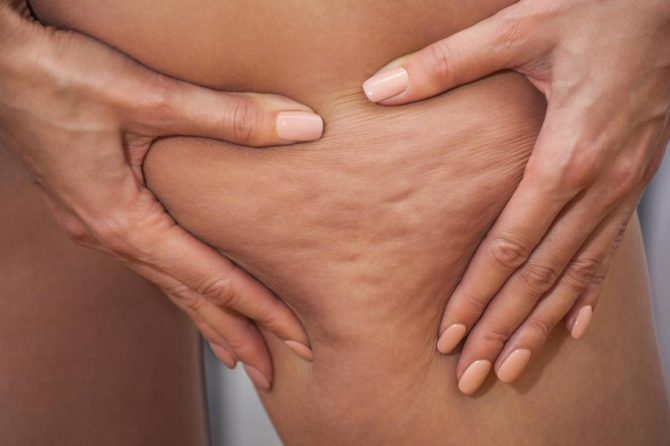
Cellulite is a very common, harmless skin condition that causes lumpy, dimpled flesh on the thighs, hips, buttocks and abdomen, most prevalent in women. More than 75% of women struggle with cellulite. While being overweight can increase your risks, women of all shapes and sizes can have cellulite.
So What Causes Cellulite
Processed & Junk Foods – Eating processed foods is one of the main causes of bad cellulite, with processed meats and cheese making the top of the list. Also be aware of margarine and highly processed fats and oils, BBQ sauces and other condiments high in sugar, unhealthy fats and salt. Say no to fizzy drinks, pasta, chocolate and white bread as these can make cellulite worse. The good news is that just as there are foods that can worsen cellulite, there are foods that help prevent it too. All have cellulite fighting properties, so if you have bad cellulite it’s time to cut out the processed foods and load up on your fresh fruit and veg. The following foods have been proven to be good for cellulite:
- Broccoli
- Green Tea
- Oranges
- Asparagus
- Bananas
- Berries
- Oily Fish
- Dark, Leafy Greens
- Ginger
Dehydration – Not drinking enough water on a daily basis can prevent your body from effectively eliminating toxins and waste. Over time, this can result in an increase in cellulite. Excess alcohol or caffeine can dehydrate your skin adding to your cellulite problem. When you’re dehydrated your skin is less supple and your collagen production is inhibited. This can make the cellulite on legs appear worse, as unhealthy, dehydrated skin accentuates its appearance.
Lack of Exercise – Exercising regularly helps keep every part of your body functioning properly, from your heart to your muscles. When you don’t move often enough your lymphatic system gets sluggish, reducing its ability to process and remove waste from the body which increases your risk of cellulite.
Genetics – Certain genes are responsible for cellulite production which could explain why some people struggle with bad cellulite while others are smooth. Genetic factors such as your speed of metabolism, distribution of fat under the skin and even ethnicity, can all play a part in whether you develop cellulite or not.
Ageing – While cellulite can be a problem in women (and men) of all ages, the older you get the more prone to it you can become. This seems to be due to reduced skin elasticity, hormonal fluctuations, lack of collagen production and sagging skin. As women age, their bodies start to produce less estrogen. This hormone usually helps keep your blood vessels flowing smoothly and your circulation working well. Poor circulation can mean a decrease in new collagen production and the breakdown of older connective tissue – increasing the appearance of bad cellulite.
How to Treat Cellulite At Home
- Dry Body Brushing. Body brushing can help improve your circulation and lymphatic drainage. This, in turn, can help reduce inflammation and strengthen your connective tissue, minimising the appearance of bad cellulite. Some dermatologists recommend body brushing at least 3-4 times a week, using a dry brush in circular motions for around 5 – 10 minutes.
- Coffee Body Scrubs. Coffee is rich in antioxidants and the caffeine can help dilate your blood vessels and reduce the appearance of cellulite on legs and buttocks. It can stimulate your skin, tightening and firming it by improving blood flow and eliminating excess water.
- Hydration. Drinking more water can help your body to remove toxins, encourages good circulation and keeps your lymphatic system moving. While drinking water won’t get rid of bad cellulite, it can help it to appear less noticeable by keeping your skin plump and healthy.
- Diet. Taking care of what you eat can support your quest for smooth, dimple free skin. Cut out all the foods we mentioned earlier and increase meat and fish, green and colourful veggies, natural fats from fish, meat, avocados and nuts.
- Stay Active. Being regularly active doesn’t mean you have to go to the gym day and night! Aim to achieve your 10,000 steps during the day. This can be done by general day to day activity like walking the dog, chasing the kids around and cleaning the house.









Leave a reply